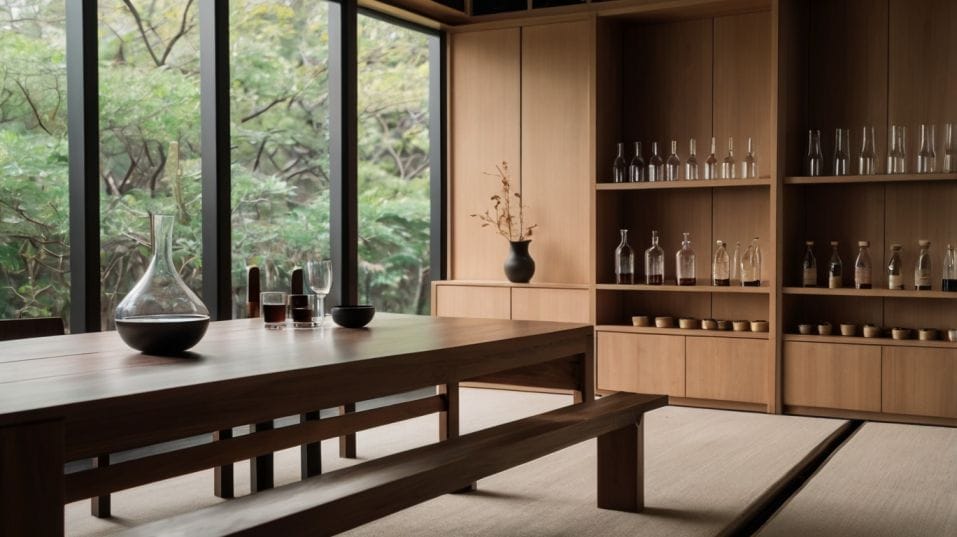Japanese Whiskey Explained in 5 Bottles
Discover five essential Japanese whiskeys that teach you to taste smarter, build a sharper palate, and collect with focus—not hype.

What if the best way to learn whiskey wasn’t loud, smoky, or showy—but quiet, clean, and exacting? Japanese whiskey invites you to slow down and taste with intention.
It sharpens your palate, trains your instincts, and reveals depth in the details. With just five smart bottles, you can build a foundation that most collectors overlook.
No hype. No flex. Just clarity, structure, and the kind of insight that lasts far beyond the last sip.
Begin with Grain: Learn to Taste in Quiet
Grain whiskey isn’t the sidekick—it’s the signal. In Japanese whiskey, grain is used with care, often as a base in blends, but the good stuff stands on its own.
A solid single grain will teach you one of the most overlooked skills in whiskey: how to taste subtlety.
Look for a bottle with light sweetness, maybe some fresh oak, a gentle creaminess—nothing showy. You’re not chasing smoke or sherry bombs here. You’re learning to detect texture, small shifts in flavor. You’re waking up your palate.
What to expect in the glass
Vanilla bean, pear skin, roasted grain, a clean finish. No burn, no bluster. Just clarity.
Grain teaches restraint. It conditions you to value finesse over firepower. That alone makes it worth your time, whether you're sipping or building a smarter collection.

Step Into Blends: Understand How Whiskey Thinks
Blended whiskey gets dismissed fast—especially by beginners who think “single malt” means “better.” That’s noise. In Japan, blending is a form of architecture. It's not about hiding flaws. It’s about crafting balance.
A good Japanese blend will pull together soft grain, structured malt, and cask character into something seamless. The right bottle doesn’t just taste good—it evolves across the glass. First sip, last sip, next day—it changes. That’s intentional.
In a high-quality blend
You’ll start to notice contrast and cohesion: nutty malt woven through citrus, a whisper of incense under dried fruit, a soft sweetness that fades into a clean, drying finish.
These bottles don’t just teach you what’s in the whiskey—they teach you how the people behind it think.
Drink it both neat and with a drop of water. Revisit it over a week. You’ll stop thinking of blends as “starter whiskey” and start seeing them as a masterclass in design.
Move to Malt: Train Your Senses for Structure
Now that you’re tuned in, it’s time to taste structure. A well-made Japanese single malt doesn’t drown you in flavor—it builds flavor like architecture.
You’re tasting choices: yeast, fermentation time, cut points, wood. A great malt reveals its blueprint slowly.
Look for a distillery-driven profile—fruit-forward but tight, lightly floral, with a mineral snap. Stay away from the overly sweet or the heavily oaked. You want something that rewards focus.
What to look for
Green apple, white peach, barley sugar, citrus oil, maybe a touch of sea air or white pepper. Nothing candy-coated. Nothing heavy-handed.
This is where you learn that finish matters more than first impression. Structure tells you how long a whiskey stays with you.
How it fades. How it frames each note. Get familiar with that, and you'll start spotting greatness a lot faster—without needing a bottle to scream.
Explore the Cask: Study Transformation
Cask influence is where whiskey turns into memory. The best Japanese whiskeys use oak as a sculptor—not a flavor bomb. It’s never about overwhelming the spirit. It’s about shaping it, extending it, refining it.
Start with a bottle that’s seen some time in sherry, bourbon, or Japanese oak (mizunara). But don’t chase intensity. Instead, study how the cask changes the mid-palate and finish.
Does it stretch the flavor without smothering it? Does it add incense, sandalwood, or dried fruit without turning syrupy?
Mizunara in particular
It’s difficult to work with. Expensive. But when done right, it gives you notes that no other oak can: temple incense, coconut husk, dry spice, and a texture that feels almost powder-soft.
These cask-driven whiskeys train your ability to trace a whiskey’s life. From distillate to wood to bottle. That knowledge? It’ll keep you from wasting money on over-oaked garbage later.
Break the Frame: Find the Bottle That Doesn’t Fit
Once you’ve learned to taste quiet, balance, structure, and transformation—it’s time to break something. Every good Japanese distillery has an outlier.
Maybe it's peated. Maybe it uses imported grain or unconventional yeast. Maybe it’s aged in wine casks or finished in something odd.
You’re not drinking this bottle because it’s perfect. You’re drinking it because it tests you. It pushes your instincts. It makes you uncomfortable, in the best way.
One day it might taste disjointed
The next, fascinating. That’s good. You want a bottle that doesn’t give up its story easily. It forces you to recalibrate, to dig into what makes whiskey complex—not just pleasant.
A collection that skips this kind of bottle stays flat. It never learns to embrace tension. But if you can appreciate the wild card for what it teaches—not just what it tastes like—you’ll grow faster than most casual drinkers ever will.
Final Thoughts: Build a Palate, Not a Pedestal
Japanese whiskey isn’t about loud statements. It’s about quiet mastery. Clean lines. Deep craft. It’s not for flexing—it’s for learning.
Every bottle you bring in should sharpen your instincts. Teach you something about structure, subtlety, finish, or contrast. You don’t need to own a hundred bottles to drink like an expert. You need five that challenge you to taste smarter.
So start now. Open one tonight. Pay attention to texture. Track how it finishes. Compare how it drinks on day one vs. day seven. The best collectors aren’t chasing rarity—they’re chasing understanding.
Build a collection that educates you. Build a palate that doesn’t flinch. And start training your senses like someone who’s serious about it.




